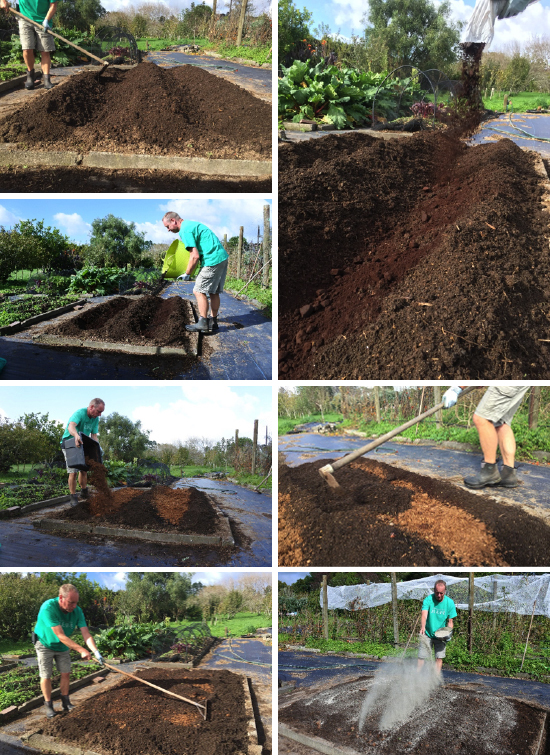Winter brassicas
Having come through a storm with the strongest winds I can ever remember, it’s time now to get into the garden and clean up some of the damage. The last of the summer garden is at an end and now there’s space to plant out our brassicas.

For many gardeners this can be a tricky crop to grow but with a few steps, we hope to share with you what makes our brasicca beds successful.

Many gardeners tell me it’s not worth growing cauliflower and cabbages as they take up space and are cheap enough to buy during the winter months. Our point of view is that there are no guarantees when you buy vegetables that they’re nutrient-dense, and eating vegetables full of nutrients is so important for our wellbeing, particularly over the winter months. Regular shop-bought vegetables don’t nourish us in the way homegrown ones can.

Brassicas in particular need good soil preparation
The first important step is to enrich your soil with good compost, animal manure and a multi-mineral fertiliser. We do this by trenching in first some coffee grounds, then compost, then animal manure. Compost will build up the soil structure. Animal manure adds nitrogen and other elements which will also feed the good bacteria and fungi in the soil and encourage earthworms. We use volcanic rock as our fertiliser. Volcanic rock also has a high calcium content which helps strengthen plant cell walls.

Pest control
Secondly, we add neem granules to the planting hole. The young plants take up the neem which helps repel white butterfly and their caterpillars, and whitefly. Neem is also a great soil conditioner.

Thirdly, we give our plants and spray of B.T. (bacillus thuringiensis). This is a natural soil-borne bacteria which repels caterpillars and doesn’t affect any other insects. It’s sold in most garden centres and home improvement stores as organic caterpillar control.

Finally we cover over the plants with hoops and netting. Not only does this protect the plants from the white butterfly, but it also keeps off those pesky pooks (pukekos).
In this bed we’ve planted cauliflowers (purple, green and white types), red cabbage and white cabbage. The planting information above applies to all brassicas – broccoli, kale, collards, pak choi and other Asian greens.
Dwarf beans
And even though our Xera beans got a battering during last week’s storm, they’re producing a crisp, delicious, abundant crop.

Have a great week!
From Rob, Jan and the Team at OEG!
Website designed by www.thecornerstorecollective.com
Developed by Richard Hpa
2 Responses
We are so grateful for all your loving work and generous contributions of information for those in needed.?
Our pleasure. Growing your own food organically and well makes a huge difference to people’s lives on all levels 🙂